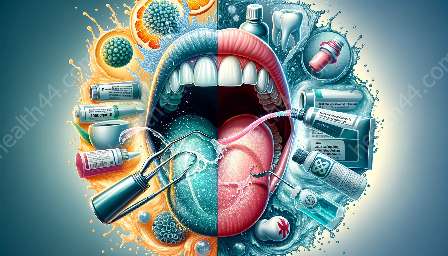Chlorhexidine mouthwash is a popular oral care product known for its effective antimicrobial properties. There are various concentrations of chlorhexidine mouthwash available, each offering unique benefits and considerations. Understanding the differences can help you make an informed decision about which concentration is best suited to your needs.
What is Chlorhexidine Mouthwash?
Chlorhexidine mouthwash is a germicidal mouth rinse commonly prescribed by dentists and used for oral hygiene. It is effective in reducing the amount of bacteria in the mouth and preventing gingivitis, plaque buildup, and periodontal disease.
Chlorhexidine mouthwash is available in different concentrations, ranging from 0.12% to 2%. Each concentration has specific uses and potential side effects that should be considered.
Concentration Options
1. 0.12% Chlorhexidine Mouthwash
This is the lowest concentration of chlorhexidine mouthwash available over the counter. It is often recommended for daily use to prevent gingivitis and maintain oral health. It is gentle on the mouth and suitable for long-term use.
2. 0.2% Chlorhexidine Mouthwash
This concentration is commonly used for short-term or intensive treatment of gum disease, periodontitis, or after dental procedures. It provides a stronger antimicrobial effect compared to the 0.12% concentration, but prolonged use can lead to tooth staining.
3. 1% Chlorhexidine Mouthwash
The 1% concentration of chlorhexidine is often used in clinical settings for pre-operative and post-operative oral care. It is also indicated for patients with compromised immune systems or certain dental conditions. Due to its high potency, it should be used under the guidance of a healthcare professional.
4. 2% Chlorhexidine Mouthwash
This is the highest concentration of chlorhexidine mouthwash, typically prescribed for severe gum disease and aggressive periodontal therapy. It provides a potent antimicrobial effect and is usually used for short-term treatment due to the risk of side effects, such as staining of the teeth and oral tissues.
Considerations for Use
While chlorhexidine mouthwash can be effective in maintaining oral health and treating various dental conditions, it is essential to consider certain factors before using it:
- The intended purpose of use: Whether it is for daily maintenance, treatment of a specific condition, or post-operative care.
- Potential side effects: Some individuals may experience tooth staining, altered taste perception, or oral irritation with prolonged use of chlorhexidine mouthwash.
- Duration of use: Short-term use may be suitable for intensive treatment, while long-term use should be monitored for any adverse effects.
- Professional guidance: Higher concentrations of chlorhexidine mouthwash should be used under the supervision of a dentist or healthcare professional.
Conclusion
Understanding the different concentrations of chlorhexidine mouthwash can help individuals make informed decisions about its use. Whether it is for maintaining oral health, treating gum disease, or post-operative care, choosing the right concentration is crucial for achieving the desired oral hygiene outcomes. Be sure to consult with a dental professional to determine the most appropriate concentration based on your specific oral health needs.









